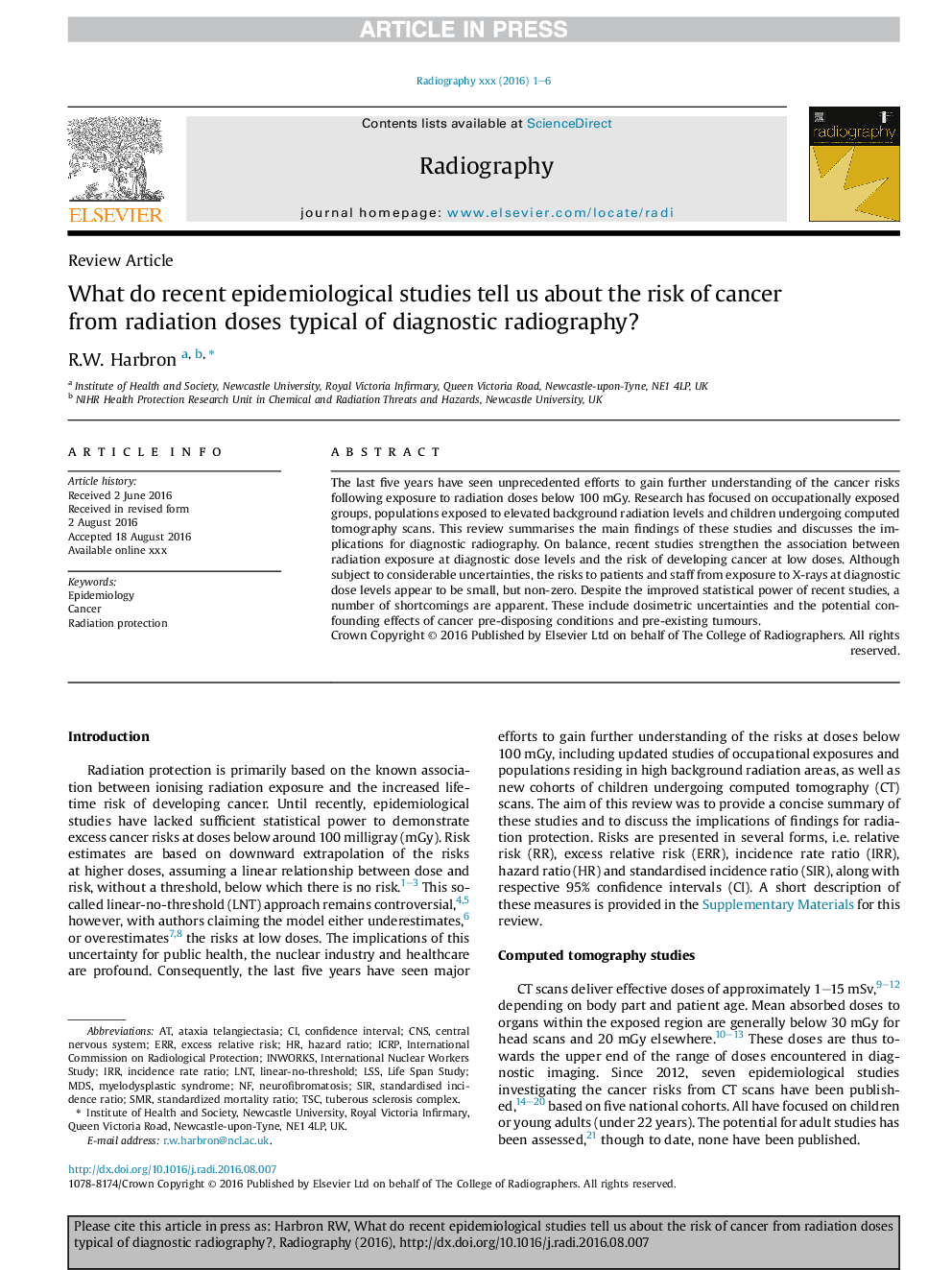| Article ID | Journal | Published Year | Pages | File Type |
|---|---|---|---|---|
| 5579426 | Radiography | 2016 | 6 Pages |
Abstract
The last five years have seen unprecedented efforts to gain further understanding of the cancer risks following exposure to radiation doses below 100Â mGy. Research has focused on occupationally exposed groups, populations exposed to elevated background radiation levels and children undergoing computed tomography scans. This review summarises the main findings of these studies and discusses the implications for diagnostic radiography. On balance, recent studies strengthen the association between radiation exposure at diagnostic dose levels and the risk of developing cancer at low doses. Although subject to considerable uncertainties, the risks to patients and staff from exposure to X-rays at diagnostic dose levels appear to be small, but non-zero. Despite the improved statistical power of recent studies, a number of shortcomings are apparent. These include dosimetric uncertainties and the potential confounding effects of cancer pre-disposing conditions and pre-existing tumours.
Keywords
TSCLSSexcess relative riskERRAtaxia telangiectasiaICRPSMRIRRSIRMDSLNTEpidemiologyRadiation protectionCNSCancermyelodysplastic syndromecentral nervous systemconfidence intervalStandardised incidence ratiohazard ratiostandardized mortality ratioincidence rate ratioNeurofibromatosisTuberous sclerosis complexInternational Commission on Radiological Protection
Related Topics
Health Sciences
Medicine and Dentistry
Radiology and Imaging
Authors
R.W. Harbron,
